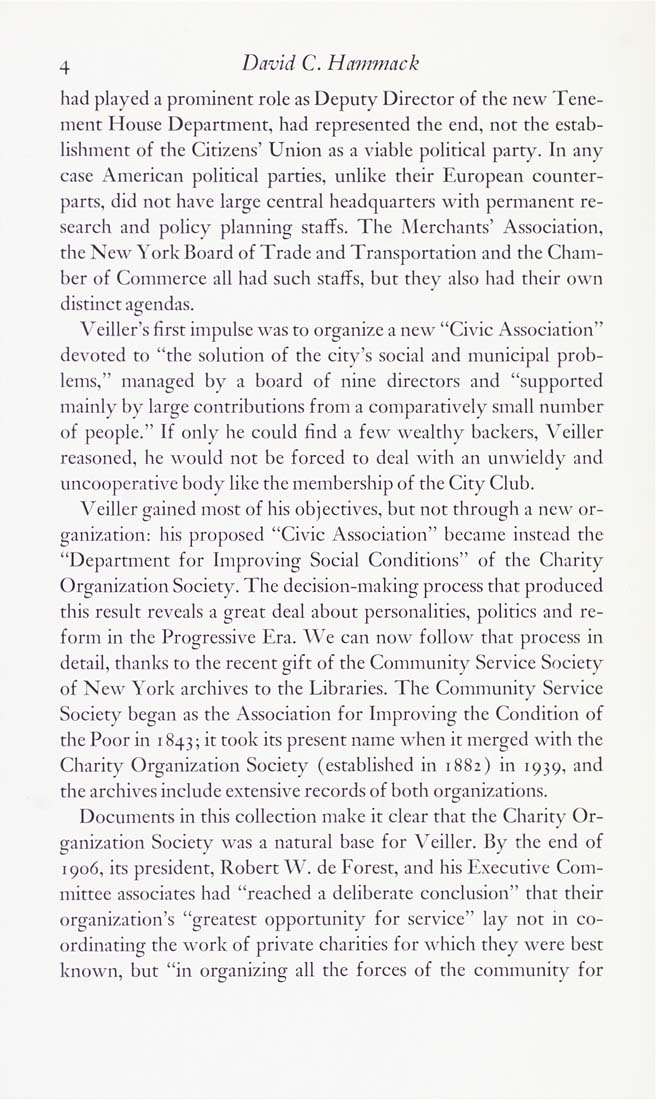Columbia Library columns (v.32(1982Nov-1983May))
(New York : Friends of the Columbia Libraries. )
|
||
|
|
|
|
| v.32,no.1(1982:Nov): Page 4 |

4 David C. Hammack had played a prominent role as Deputy Director of the new Tene¬ ment House Department, had represented the end, not the estab¬ lishment of the Citizens' Union as a viable political party. In any case American political parties, unlike their European counter¬ parts, did not have large central headquarters with permanent re¬ search and policy planning staffs. The Merchants' Association, the New York Board of Trade and Transportation and the Cham¬ ber of Commerce all had such staffs, but they also had their own distinct agendas. Veiller's first impulse was to organize a new "Civic Association" devoted to "the solution of the city's social and municipal prob¬ lems," managed by a board of nine directors and "supported mainly by large contributions from a comparatively small number of people." If only he could find a few wealthy backers, Veiller reasoned, he would not be forced to deal with an unwieldy and uncooperative body like the membership of the City Club. Veiller gained most of his objectives, but not through a new or¬ ganization: his proposed "Civic Association" became instead the "Department for Improving Social Conditions" of the Charity Organization Society. The decision-making process that produced this result reveals a great deal about personalities, politics and re¬ form in the Progressive Era. We can now follow that process in detail, thanks to the recent gift of the Community Service Society of New York archives to the Libraries. The Community Service Society began as the Association for Improving the Condition of the Poor in 1843; it took its present name when it merged with the Charity Organization Society (established in 1882) in 1939, and the archives include extensive records of both organizations. Documents in tliis collection make it clear that the Charity Or¬ ganization Society was a natural base for Veiller. By the end of 1906, its president, Robert W. de Forest, and his Executive Com¬ mittee associates had "reached a deliberate conclusion" that their organization's "greatest opportunity for service" lay not in co¬ ordinating the work of private charities for which they were best known, but "in organizing all the forces of the community for |
| v.32,no.1(1982:Nov): Page 4 |







